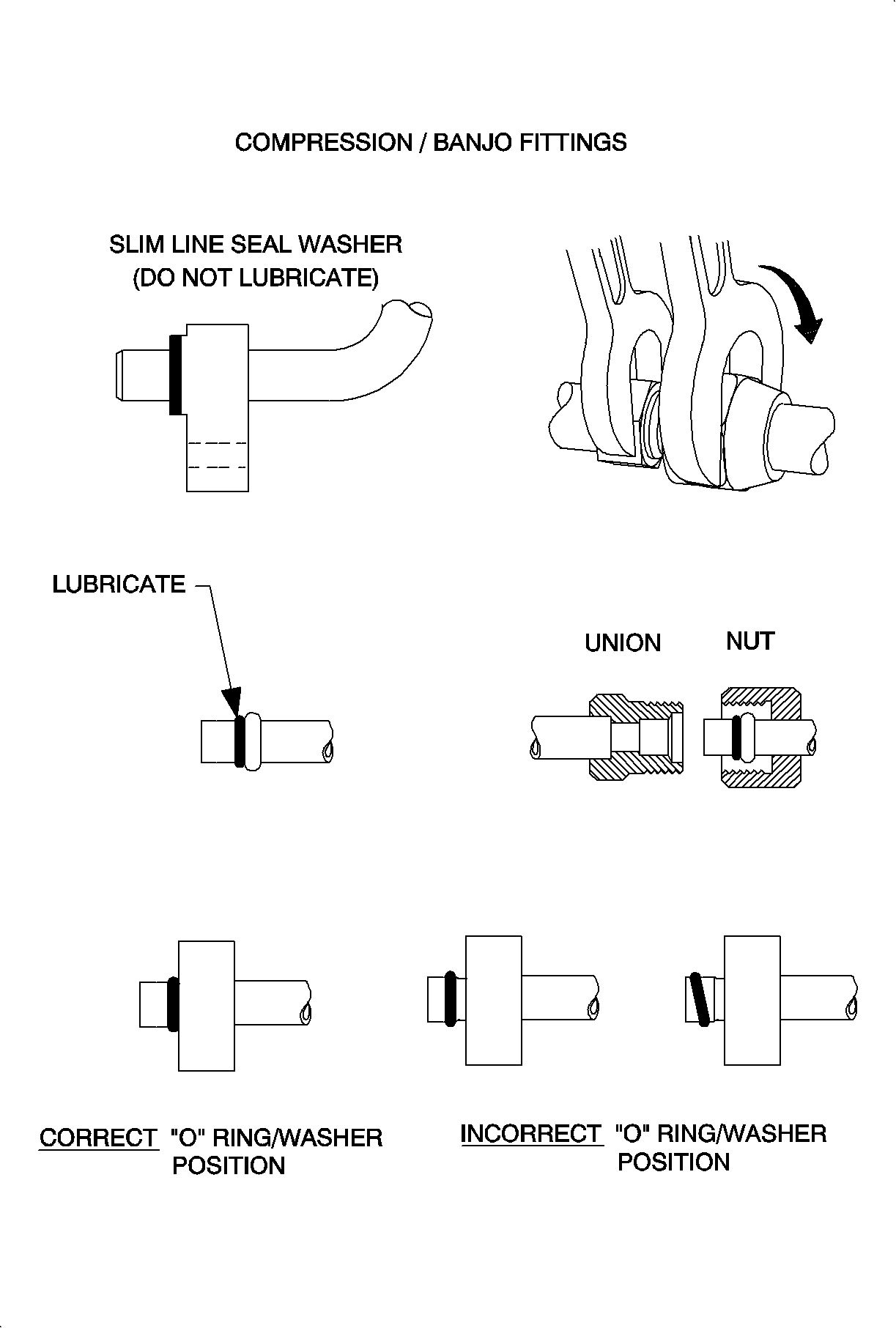Handling Refrigerant Lines and Fittings
- Clean tools and a clean work are important for proper A/C system service. Joints, fittings, and components should be cleaned before any on car repairs. Clean with solvent, dry with air and use only lint free cloths to wipe parts.
- The flexible hose lines should never be bent to a radius of less than four times the outside diameter of the hose.
- Flexible hose lines should be inspected regularly for leaks or brittleness and replaced with new lines if deterioration or leaking is found.
- All metal tubing lines should be free of dents or kinks to prevent loss of system capacity due to line restriction.
- When disconnecting any fitting in the refrigeration system, the system must first be discharged of all the R-134a. Using an approved refrigerant recovery system, proceed very cautiously regardless of gauge readings. Injury can occur if there happens to be liquid R-134a in the line. If pressure is noticed when fitting is loosened, retighten fitting and recover remaining refrigerant.
- In the event any refrigerant line is opened to the atmosphere, it should be immediately capped or taped to prevent entrance of moisture and dirt. If not, internal compressor wear, or plugged lines in the condenser and evaporator core could result. Always replace O-rings or slim line seal washers on any lines that are removed.
- The use of the proper wrenches when making connections on O-ring fittings is important. The opposing fitting should always be backed up with a wrench to prevent distortion of connection lines or components.
- Tighten all tubing connections as shown in illustration. Insufficient or excessive torque when tightening can result in loose joints or deformed parts. Either condition can result in refrigerant leakage.
- O-rings, seal washers and seats must be in perfect condition. A burr or piece of dirt may cause a refrigerant leak. When replacing the O-ring, first coat it with clean R-12 Refrigerant oil (mineral) and position on line as shown.

Important: Do not lubricate the new slim line seal washer on the compressor side of the suction hose. The slim line seal washer cannot be interchanged with a typical O-ring in the A/C system. Use only suction line slim line seal washers as a replacement.
O-Rings and Slim Line Seal Washer
- Install new Saturn approved service replacement air conditioning O-rings or slim line seal washer whenever a joint or fitting is disassembled, except when provided on new components. Even though an O-ring or slim line seal washer may look the same, it is extremely important that only recommended service replacement air conditioning parts be used or leakage of refrigerant will occur.
- When replacing O-rings or slim line seal washer on an air conditioning component or joint connection, the fitting design should be carefully identified to ensure installation of the correct air conditioning service replacement part. Use a non-metal tool (e.g., plastic pick) to remove O-ring to avoid damaging the mating surface on the fitting.
- O-ring and slim line seal washer:
- Prior to installation, verify that both O-rings and fittings have not been nicked or deformed. Deformed or nicked parts must be replaced. Failure to use the proper service replacement parts and procedures may result in excessive refrigerant leakage.
Notice: Use only Polyalkylene Glycol Synthetic Refrigerant Oil (PAG) for internal circulation through the R-134a A/C system and only 525 viscosity mineral oil on fitting threads and O-rings. If lubricants other than those specified are used, compressor failure and/or fitting seizure may result.
Important: Do not lubricate the new slim line seal washer on the compressor side of the suction hose. The slim line seal washer cannot be interchanged with a typical O-ring in the A/C system. Use only suction line slim line washers as a replacement.
| 3.1. | O-rings should be coated with new R-12 mineral compressor oil. However, the O-ring should not be soaked. |
| 3.2. | Slim line seal washer should not be lubricated with any substance. |

